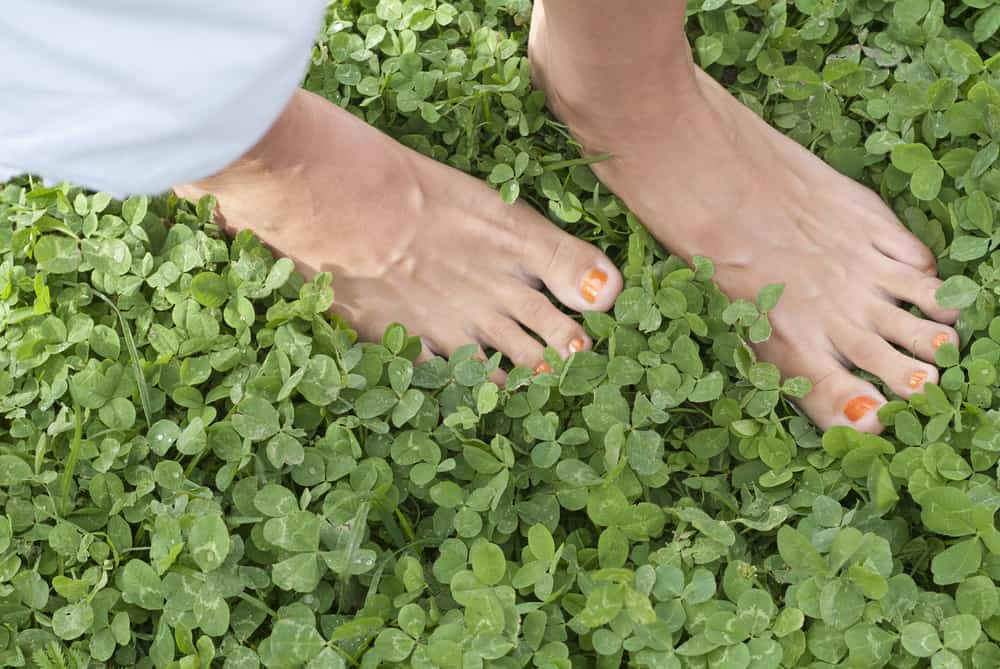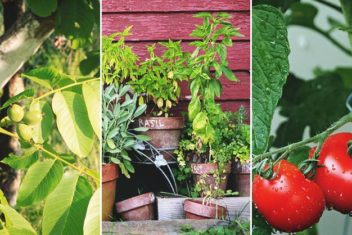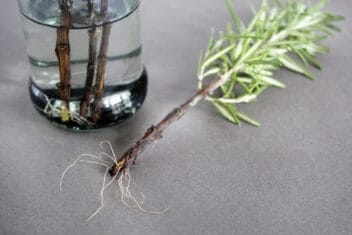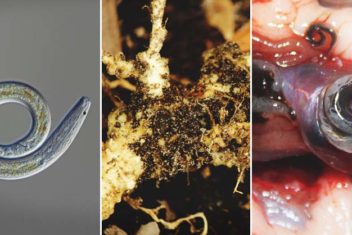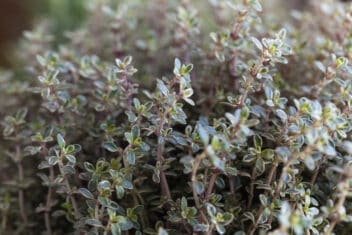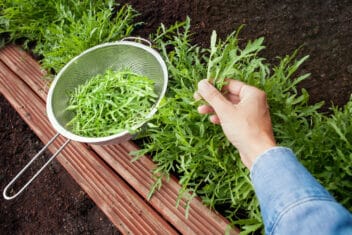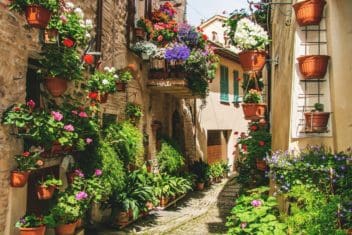With everything going on with climate change and the environment, many gardeners are looking at more sustainable practices in our gardens.
Traditional turf lawns use a lot of water and fertilizers and are an inefficient use of precious resources. Mowing creates emissions, and turf lawns don’t provide suitable environments for our precious pollinators.
It’s time to start thinking about lawn alternatives. If this is your mindset, and you’re looking for environmentally friendly, low-maintenance, pretty, and easy-to-maintain lawns, consider a clover lawn.
Let’s get started, so you can learn how easy it is to use clover.
What is a Clover Lawn?

Clover is a perennial herbaceous plant that grows to about four to six inches tall with a spread of around 12 inches. It’s a quick-growing legume that replenishes the soil with nitrogen.
You can create a lawn entirely made of clover or a mixture of traditional turf and clover. This is a good choice for high-traffic areas.
Clover has broad leaves that cover the ground nicely and a dense spread. You get small flowers of varying colors, including white, pink, or red. You can allow those flowers to bloom for pollinators or mow for a cleaner, more lawn-like look.
Clover was once a popular lawn choice, but it fell out of favor, and many people now consider clover a weed.
Clover is indigenous to Europe but has naturalized in most places worldwide, including North America.
Pros of a Clover Lawn
- Clover stays green throughout summer with little need for additional water. Clover is drought resistant, and in southern areas, it will remain green most of the year. In cooler areas, it will go green in spring and stay that way until the first freeze.
- Minimal mowing is needed for clover lawns. You can mow to deadhead spent flowers in summer or tidy up. If you want to prevent the clover from flowering, you can mow to keep it short and tidy.
- Clover attracts beneficial parasitic wasps that are harmless to us but feed on pests like aphids, white flies, and scale insects.
- Clover attracts pollinators such as bees, who will also visit your other plants.
- You don’t need to fertilize clover. It is a nitrogen-fixing plant that takes care of itself.
- Clover isn’t fussy about soil and will grow in poor-quality ground.
- Clover feels wonderful under bare feet, so children love playing on it.
- Unlike most turf lawns, clover doesn’t turn yellow when dogs do their business.
Cons of a Clover Lawn
- Clover suits low to medium-traffic areas at best. For busier traffic areas, you can mix clover with turf.
- Clover lawns may need reseeding every three years or so to keep them even. It’s a short-lived perennial that reseeds well in mixed clover/turf lawns, but in all clover lawns, reseeding may be necessary.
- Clover stains clothes easier than turf.
- Clover doesn’t look as tidy as a finely-manicured turf lawn.
Types of Clover for a Lawn
Dutch White Clover (Trifolia repens) is the most common type, so you may already have some in patches on your turf. White Dutch clover grows between four and eight inches tall. All the flowers are small and white. It requires at least four to six hours of sunlight each day. The seed rate is one pound per 1000 square feet.
Micro Clover (T. repens. var pipolina) has been bred to produce small flowers no taller than six inches. It doesn’t clump as much as White Dutch clover, so it has a more even and consistent appearance. It also can withstand a little more traffic.
Micro clover tolerates some shade, though sunlight will give you a better quality lawn. There are far fewer flowers than white Dutch clover and it will go brown in winter when it hits dormancy. Seed rate is one pound per 500 square feet.
Red Clover (T. pratense) isn’t used much in residential yards. The flowers are pretty tall and suit grazing for animals or as a cover crop. Keep this in mind if you are looking for clover seeds to buy.
Sweet Clover (Melilotus officeinalis) is like red clover in that it doesn’t suit being used for a residential lawn.
How to Plant a Clover Lawn
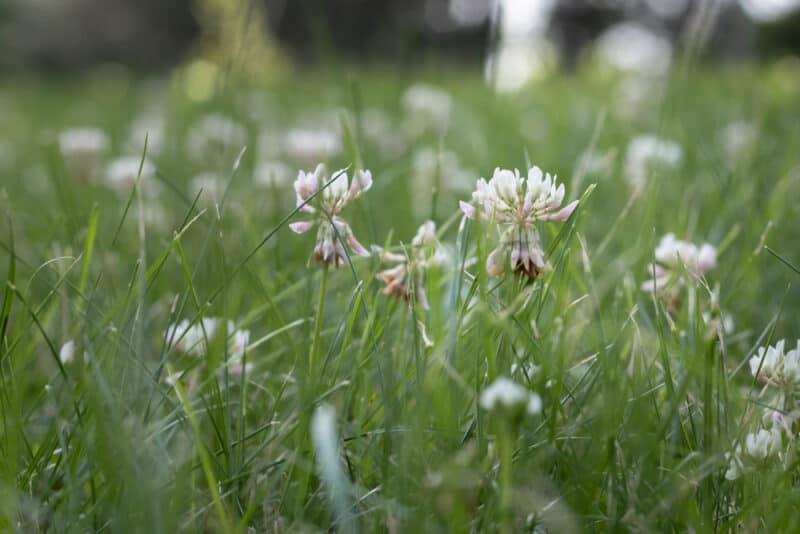
You first need to decide if you want a clover lawn on its own or a mixture of clover and traditional turf. Consider an entirely clover lawn if the area is low to medium traffic. If the area is a high-traffic area, you may want a mixture.
You might also want to consider trialing a small area of existing lawn to see if you like it.
Soil
For best results, ensure the soil pH is as close to optimum as possible. The pH needs to be between 6.0 and 7.0. Use a pH meter or soil test kit to get the specific result.
You can amend the soil by adding lime to make it more alkaline or by adding peat moss to make it more acidic. The amounts will depend on the pH result, so ask a local expert for help once you know the level.
Planting Your Clover Lawn
The best time to start this process is in spring when you are positive the last frost is over. If you live in an area with mild fall weather, you could try fall planting. The temperature needs to be consistently above 40ºF for at least a month before winter begins to set in.
Over-Seeding an Existing Lawn With Clover
- Start by mowing the existing lawn as low as possible without killing it.
- Rake the debris and remove it,
- Aerate the lawn if you can. Use a manual core aerator or a fork to get oxygen onto the soil.
- Clover seed is tiny, so mix it with sand before broadcasting so you can see where it goes and stop it from clumping together. Most spreaders have trouble broadcasting seeds as small as clover.
- Once you have broadcasted the clover, water it well without saturating the soil.
- Water every day for two weeks so the clover grows strong to embed into the existing lawn.
- Because there is existing grass, you might need to re-cast clover seeds if enough hasn’t taken.
Planting a New Clover Lawn
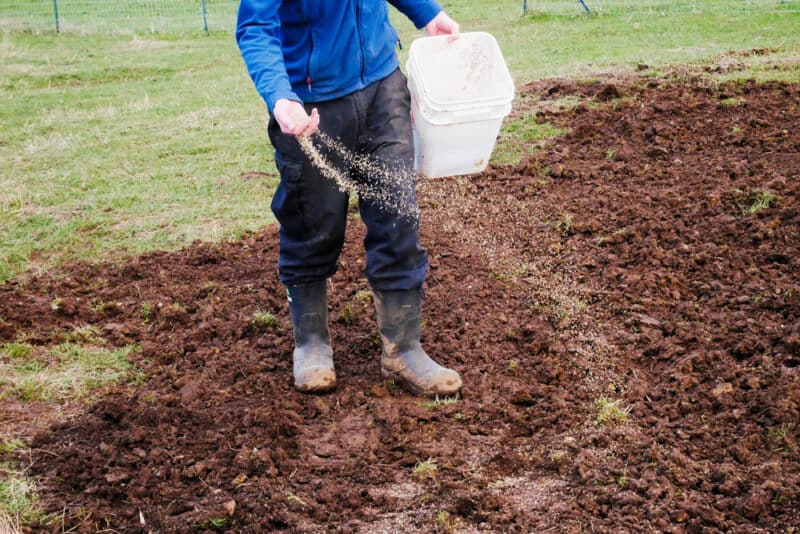
This takes more work than over-seeding an existing lawn, and you must start preparing the ground several weeks in advance. Consider the time of year so you don’t end up with a muddy area from rain on bare soil.
This is a great trialing option if you have a bare area of land, or somewhere turf has failed.
- Remove all weeds, sticks, debris, and stones.
- Till, rake, or loosen the top layer of soil up to six inches deep and water well to get existing weeds to grow.
- Remove any new weeds at least two days before planting the clover.
- Add weed-free topsoil if necessary.
- Rake the area smooth and level.
- Mix the clover seeds with sand and broadcast evenly, covering the soil without allowing the seeds to clump in small areas. The seed must be spread evenly.
- If you are planting new turf seeds with the clover, broadcast them separately now.
- Rake the soil to cover the seeds lightly. Clover won’t germinate if you bury it too deeply.
- Compress the soil by using a roller, or simply walk over the entire area without pressing too hard.
- Water well regularly until the lawn is well established.
7 Tips to Maintain a Clover Lawn
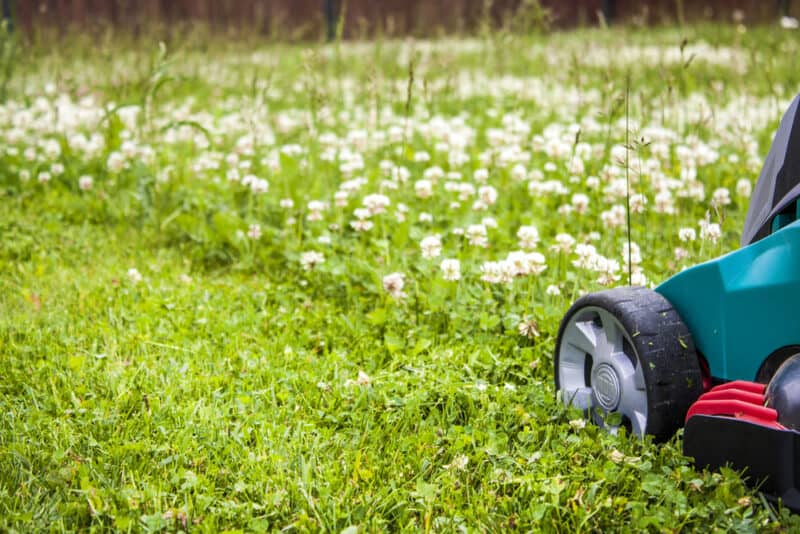
- Mow sparingly. One of the benefits of a clover lawn is attracting bees. If you keep clover mowed short, the blooms are continually cut off. Try planting clover in an area where you don’t mind the less manicured look. If you mow, use the mower without the catcher and allow the cut clover to lay on the lawn as an organic fertilizer.
- Don’t fertilize the clover lawn. Clover contributes nitrogen to the soil, so it doesn’t need regular fertilizing. If you think the clover lawn is struggling or appears deficient in nutrients, try a low-nitrogen fertilizer. The lawn will become hardier and healthier if you provide phosphorus and potassium.
- Clover will die if you use herbicides. Clover suppresses weeds naturally, so it takes care of itself. If any weeds appear on the clover lawn, remove them manually.
- Water well in the first month until the lawn is set, especially when starting a clover lawn from bare soil. If there is sufficient rain, be wary of over-watering.
- Don’t walk on the lawn too soon. Until the clover is well set and close to its full height, it should remain untouched for foot traffic. Once it is lush, you can start walking and mowing on your desired schedule.
- If you plant turf with clover, sow the seeds separately. This is because clover seeds are tiny and will sink to the bottom of the container, meaning they will all be in the last area you cast the seeds on. Keep them separate and sow them one after the other, ensuring you spread them evenly.
- If you have a large area of clover, consider having bees. They love clover, and it adds a wonderful taste to honey.
